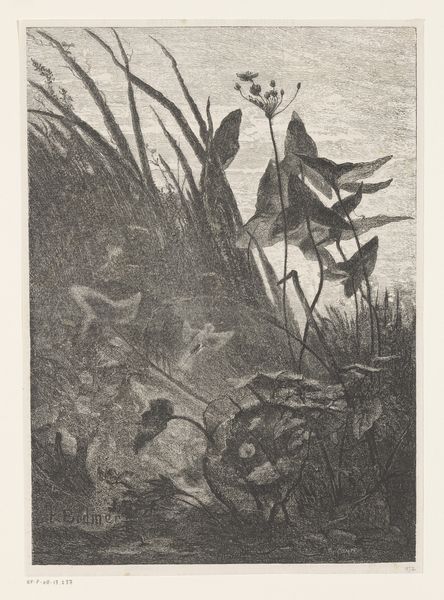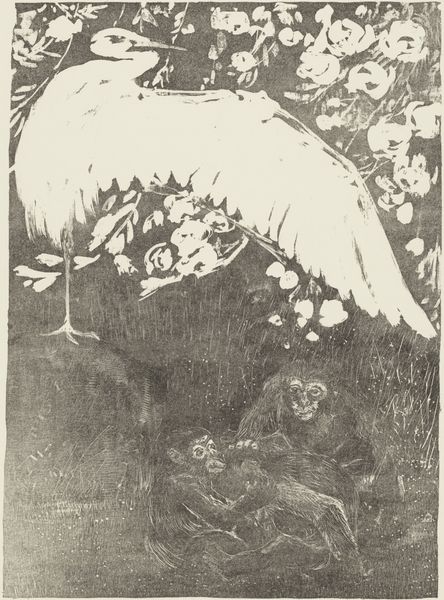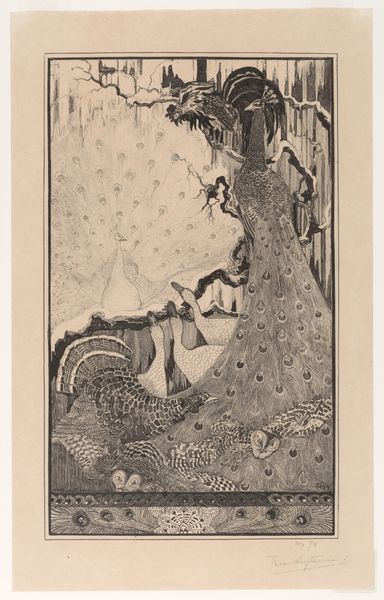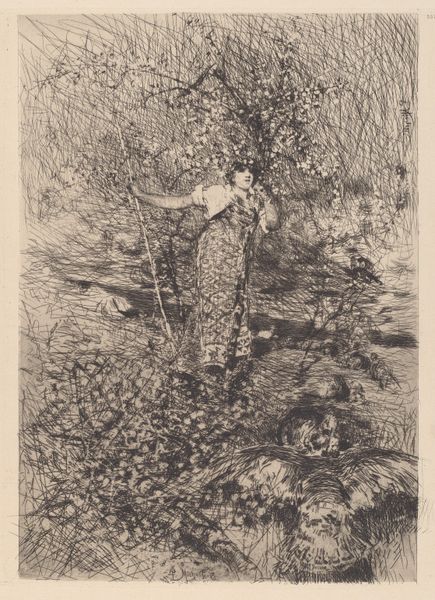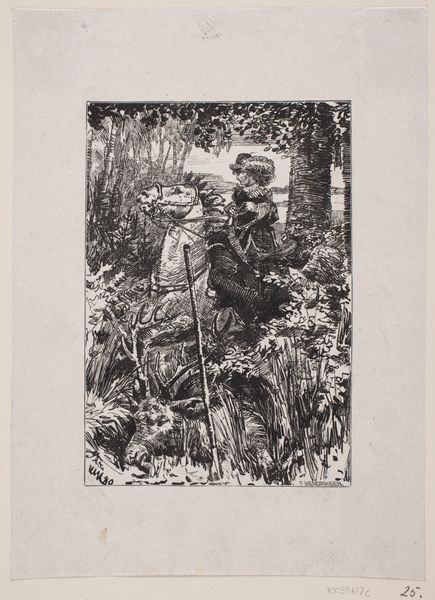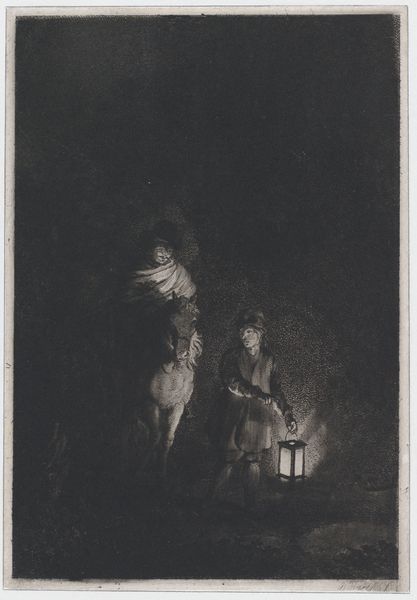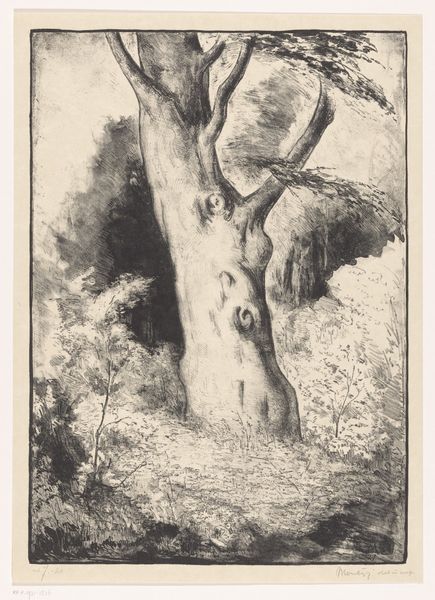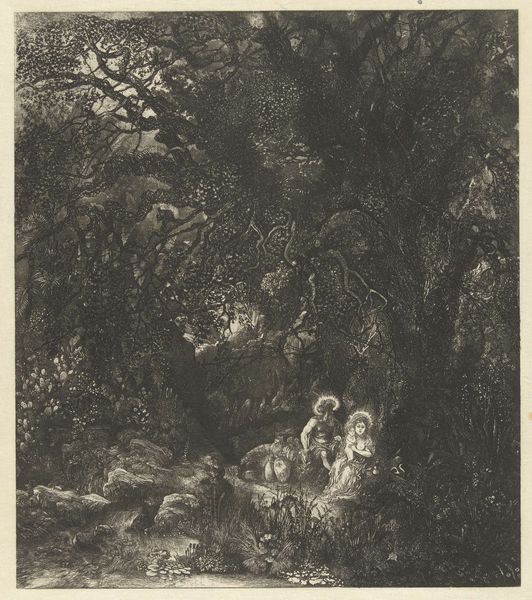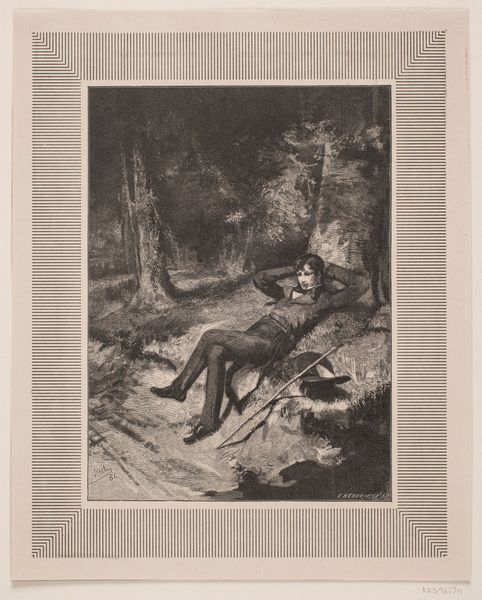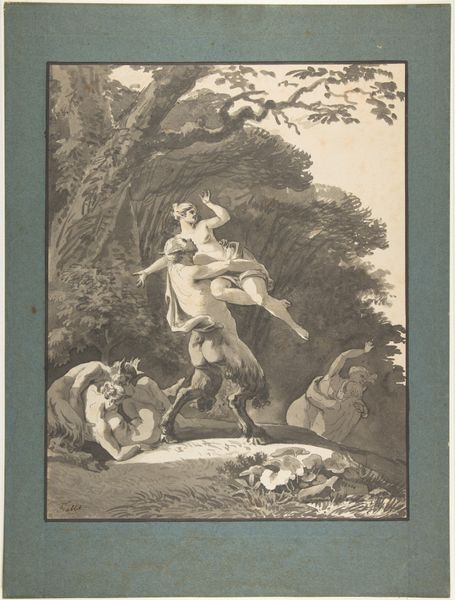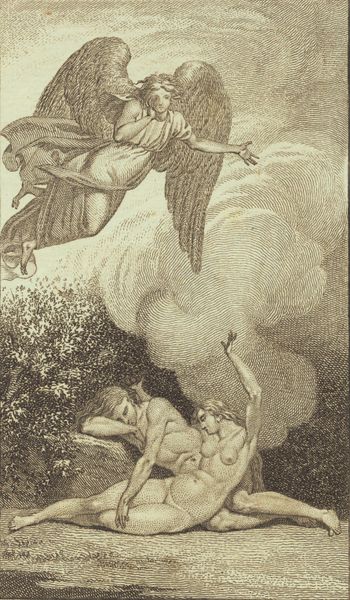
Dimensions: Plate: 13 7/8 × 9 in. (35.2 × 22.8 cm) Sheet: 17 3/8 × 12 1/16 in. (44.2 × 30.6 cm)
Copyright: Public Domain
James Tissot, a French artist, created "The Widower" using etching and drypoint, a process involving metal plates. The artist would have used sharp needles to directly incise lines and textures into the metal, with the drypoint burr creating a velvety effect when printed. The richness of the black ink against the stark white paper gives a strong contrast. This visual drama emphasizes the emotional weight of the scene. The fineness of the lines allows for incredibly detailed depiction, from the man's beard to the flora in the garden. Printmaking enabled the wide distribution of images. The artwork offered middle-class audiences access to art that was otherwise exclusive. Tissot produced multiple states of this print, reworking the image over time. His labor-intensive craft speaks to the rising market for original prints in the late 19th century. Considering the materials and processes, we can see how Tissot's print bridges fine art and commercial markets, reflecting social themes of his time.
Comments
No comments
Be the first to comment and join the conversation on the ultimate creative platform.
